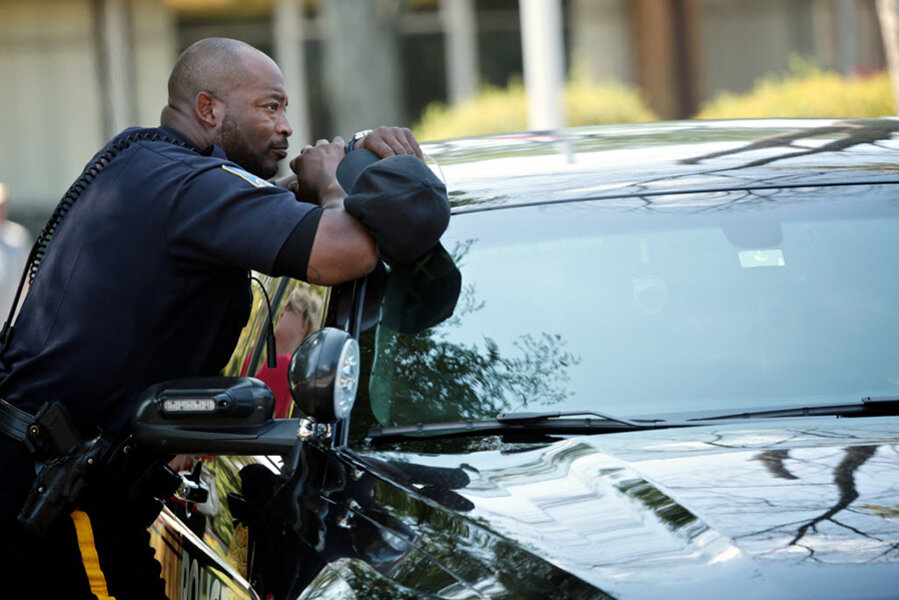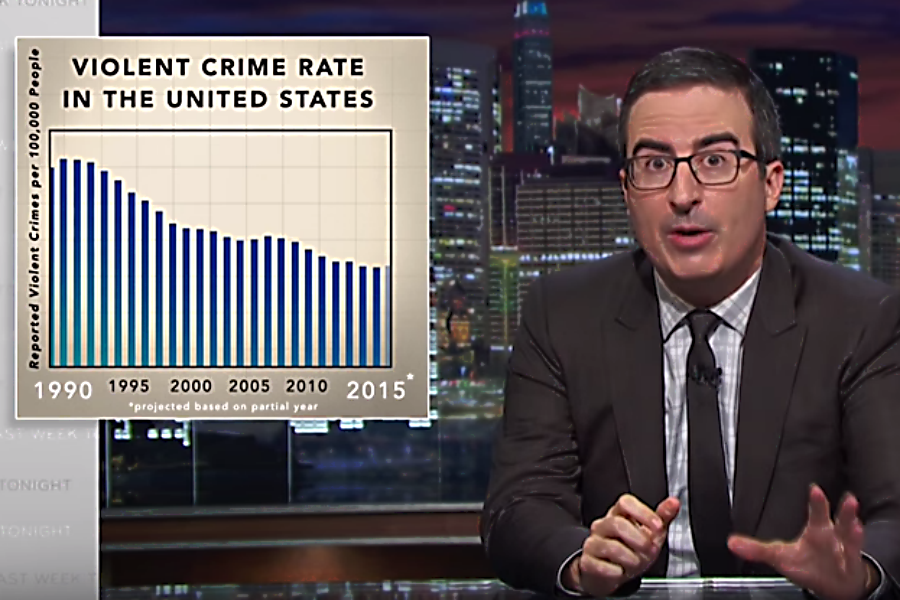Are police deaths really on the rise? It depends on how you look at it.
Loading...
At first glance, the numbers are startling.
Less than a month after gunmen killed eight police officers in Dallas and Baton Rouge, La., a new report shows the number of officers shot and killed increased 78 percent, to 32 this year as of July 20, compared to 18 deaths during the same six-month period last year.
But is this a short-term spike or the end of a downward trend in cop deaths? And how accurate is the data?
When looking at the rise in police killings shown in the report, released Wednesday by the National Law Enforcement Officers Memorial Fund, criminologists observe that the numbers have often fluctuated from year to year. While closely tracking fatalities is valuable, they say, increases over a brief period shouldn’t be confused with the larger trend: shootings of police have declined dramatically since a high in the 1970s, driven in part by changes in policing, such as the use of body armor.
“Six months isn’t enough data to know if this is the beginning of something awful or an anomaly,” says David Harris, a law professor at the University of Pittsburgh in Pennsylvania.
“These last eight months of police deaths have just been horrifying, and there’s nothing that compares, and nobody should downplay the deaths of those officers,” Professor Harris, who studies police behavior, tells The Christian Science Monitor. “But if the question is the long-term trend, you have to move beyond six months or even a year. If it continues, we should look at policies, it’s just that we can’t tell yet if we’re there.”
A fractious debate
The Memorial Fund, a nonprofit, has long tracked deaths in pursuit of its mission of “honoring and remembering the service and sacrifice of law enforcement officers” in the United States. This year’s mid-year report, however, comes in the midst of a fractious debate about policing that has led some commentators to accuse activists pushing for greater awareness of police violence of provoking the carnage that erupted in Dallas and Baton Rouge.
Former New York City Mayor Rudy Giuliani has said the Black Lives Matter movement is “inherently racist,” arguing the movement “puts a target on the backs of [police officers],” a claim activists have strongly rejected. In May, Louisiana passed the nation’s first “Blue Lives Matter” law, extending hate crimes protection to include violence against police, firefighters and emergency medical responders.
The report, which finds that 14 of the shootings during the first half of the year were ambush attacks, compared to three such attacks by the same period last year, could potentially provide a further talking point for a focus on law and order that dominated events such as the Republican National Convention.
“Certainly cops were aware, you could even say paranoid, about ambushes before this. There’s a great amount of fear instilled in cops, and I think that’s a little bit of a problem,” says Peter Moskos, a former Baltimore police officer who teaches at John Jay College of Criminal Justice in New York City.
“But these [recent attacks] are a little different because I think, right or wrong, they are linked to a movement and then it seems more threatening,” he adds.
'Sunshine is the best disinfectant'
But some say that much like data on shootings by police, which can be similarly hard to track, the report could also be a conversation starter.
“I’m one of these guys who believes sunshine is the best disinfectant, and so knowledge is the best way to go,” says David Klinger, a former police officer who teaches criminology at the University of Missouri, St. Louis.
“If people understand why the police are wary, they might be more likely to be less confrontational toward the police,” he tells the Monitor. On the other hand, for citizens alarmed by police violence, exemplified by recent shootings of African-American men in Louisiana and Minnesota, “perhaps officers will be alert to this heightened concern and manage to avoid getting into situations where they use force,” he says.
While the Memorial Fund and the Officer Down Memorial Page, another group that memorializes officers, are private groups, they’ve emerged as valuable sources for tracking violence committed against police in near-real time, says Professor Klinger.
“Here’s an effort to bring in data, and as an economist, I think data will hopefully help us gain an understanding of what the problem is,” David Mustard, an economist at the University of Georgia in Athens, Ga., who has studied police fatalities, tells the Monitor.
Noting many commentators operate in what he calls a “data-free zone,” he says, “that doesn’t preclude some organizations from either advocating or opposing [the report’s conclusions] … but I think generally having good data helps clarify the political debate.”
Different data sources
The FBI also tracks “felonious” killings of police officers, but their data is released with a delay; preliminary statistics for last year were released in May and this year’s numbers won’t be released until next year.
Part of the reason for the differing time frame has to do with how the data is collected. The FBI’s data on shootings of police, as with other data in its Uniform Crime Reports, is self-reported by police departments.
That means some departments, including New York City, choose not to report their data, while the FBI’s data doesn’t count some law enforcement personnel (such as corrections officers) when it compiles information on police fatalities, says Steve Groeninger, of the National Law Enforcement Officers Memorial Fund.
The Memorial Fund, by contrast, draws on what Mr. Groeninger calls a “hybrid” approach, combining data on shootings drawn from news reports with police reports and surveys requested from a department where a shooting has occurred.
But the varying sources of data can also make comparisons that drawn on different data sets more potentially fraught, notes Professor Harris, of the University of Pittsburgh.
The FBI, for example, said earlier this year that its preliminary report showed 41 officers were “feloniously” killed in the line of duty in 2015, a decrease of nearly 20 percent from the 51 officers killed the previous year, with most of these deaths involving firearms.
According to the Officer Down Memorial Page, 39 officers were shot in 2015, compared to 47 the previous year, a decrease of around 17 percent.
The use of crowd-sourced data gathered by the private groups also mirrors similar databases used to track police shootings.
“There is no good source of data on citizens killed by police, so who are we relying on – The Washington Post and The Guardian,” says Harris, referring to databases created by the two news organizations.
Despite the time delays, the FBI’s data on police fatalities is far more complete than its data on citizens killed by police, notes Professor Moskos of John Jay College. In December, the FBI began overhauling how it tracks uses of force by officers in response to concerns about gaps in its data.
The varying statistics can also make it possible to “cherry pick” statistics to fit a particular political perspective, a concern the comedian John Oliver noted had enveloped discussions of a rising crime rate at the Republican National Convention.
Responding to a comment by former House Speaker Newt Gingrich that “the average American, I will bet you this morning, does not think crime is down, does not think they are safer,” Mr. Oliver instead pointed to a graph drawn from FBI statistics showing a steady decrease in violent crime.
“It’s not a Rorschach test,” he said on an episode of his HBO show “Last Week Tonight.” “You can’t infer anything you like from it.”
'It represents 67 too many'
Still, for police officers, statistics showing an increased number of fatalities could have an effect, including forcing departments to take safety precautions to protect officers, notes Groeninger of the National Law Enforcement Memorial Fund.
“Based on the officers I know, there is a concern that they feel they’re being targeted simply for putting on the uniform they have to wear and doing the work they have to do,” he says. “Looking at 67 fatalities total during this period, it represents 67 too many, it represents the personal communities and professional colleagues of 67 people.”
But one of those potential changes, the idea of officers “doubling up” on shifts so an officer doesn’t confront a potentially dangerous situation alone, could have other consequences, notes Moskos.
“Ultimately, I think police-community relations are going to be improved when cops interact with the community more and better,” he says, “and this is not moving in that direction to have fewer interactions with twice the cops. So I’m hoping that [the increase in fatalities] is a phase and, it’s that 'This too shall pass.' ”









